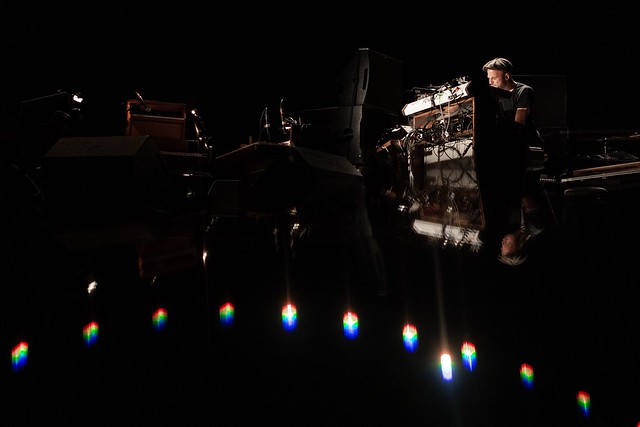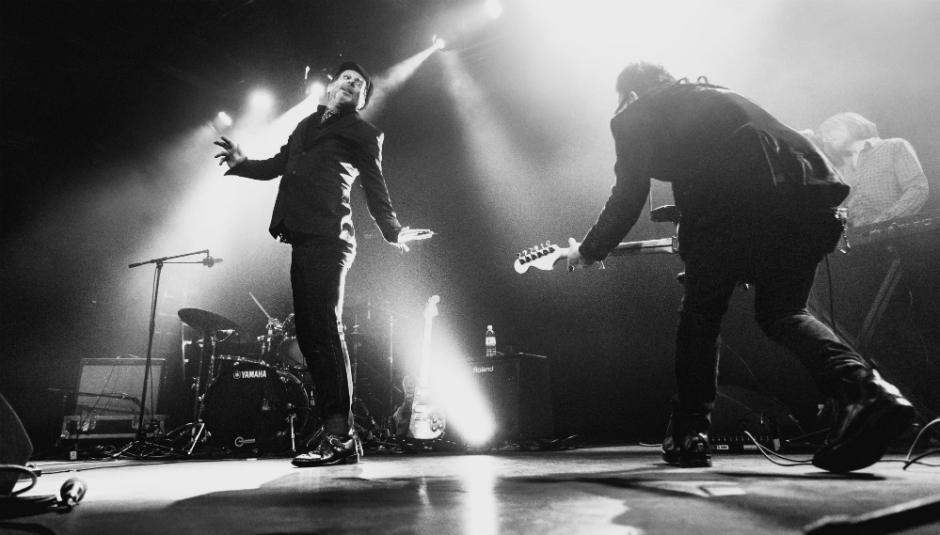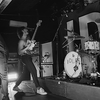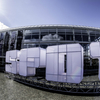Every spring since 2009, Knoxville, TN - the Scruffy City - opens for the Big Ears Festival, which showcases a staggering concert lineup rounded out by panel discussions, film events, and art exhibits. With shows in theatres, churches, bars, galleries, visitor’s centers and museums connected by dining and drinking establishments downtown, the festival has become a love letter to its unlikely hometown. Despite such a large number of venues, the organization was excellent, thanks in part to a well-designed mobile app.
The festival lineup is clearly curated with music nerds more than partygoers in mind. I heard a roomful of people laugh at a joke about ECM starting their records with five seconds of contemplative silence, and I saw a line to see Harold Budd wrap a church several times around. While the programming caters to niche listeners, it manages to be broadly niche in the awareness that audiences for Kara Lis Coverdale, Béla Fleck, and Rachel Grimes overlap more often than not. That cross-pollination is at the heart of the festival, and having so many venues permitted the listener to literally journey between experiences.
Throughout the festival, there were panel discussions which yielded conversations about all aspects of the creative process. I attended sessions on the capability of the human voice, the history of ECM records (whose 50th anniversary was celebrated there), and a panel on using history in songwriting which featured Richard Thompson, Rachel Grimes, and Rhiannon Giddens.

At that panel, Giddens got choked up discussing reading receipts for slave sales and how those ideas informed the music she wrote for the Nashville Ballet Company’s Lucy Negro Redux which was performed at Big Ears. Based on a book of poems by Caroline Randall Williams about a young black woman who reimagines herself as Shakespeare’s “dark lady”, the show’s sucker punch of pathos was matched only by the technical acumen. Spanning a number of musical genres and dance styles, the production achieved authentic diversity. In addition to the ballet company’s dance, Williams herself contributed poetic narration while Giddens and Francesco Turrisi performed the music.
St. John’s Episcopal Cathedral and Church Street United Methodist Church both hosted a number of shows, lending their stunning architecture and immaculate acoustics to events. I.C.E (International Contemporary Ensemble) performed five sparse works by Anna Thorvaldsdottir which unfurled seamlessly. At the same venue, Mountain Man performed a cappella harmonies, delivered in a warm, conversational style. Béla Fleck, too, benefited from the small space where the audience could see him trade between different banjos at a solo performance, showcasing each instrument’s potential alongside his expert skill and genial disposition.

While a number of musicians performed on the piano or other keyboard-based instruments, no two did it the same. Rachel Grimes accompanied vocalists and spoken-word actors in an opera she wrote about Kentucky history. Carla Bley performed with her trio to an audience of longtime fans. At the Knoxville Art Museum, Joep Beving delivered delicate compositions with his custom-built Schimmel upright for an hour before inexplicably running out the back door. Vijay Iyer and Craig Taborn performed avant-garde jazz pieces together, each on his own piano as the music alternately harmonized and fractured. Nils Frahm’s stunning fluidity was a special highlight. He programmed beats, played a number of synthesizers, and performed minimal piano compositions on both an upright and a baby grand, occasionally using amplified toilet brushes in the piano for percussion.
In addition to the virtuoso instrumentalists, innovative singers demonstrated the versatility of the voice. Legendary composer Meredith Monk delivered a new piece titled ‘Cellular Songs’ with women from her ensemble, singers dressed in a variety of white outfits, working individually and together to dramatize the plurality of a cell. On a panel about the voice, Theo Bleckmann shared a list of things he could do with his voice, which he supported with a performance of Kate Bush covers and one of German songs.
Two of the more anticipated indie rock affairs concerts by were Mercury Rev and Spiritualized, held on subsequent nights at the Mill and Mine. Mercury Rev delivered a tight but somewhat repetitive performance. (As one festivalgoer quipped, Mercury Rev was in retrograde that night.) The following night, they provided live accompaniment for a showing of 1962 cult classic Carnival of Souls, which lent an eerie humor to the movie. Spiritualized opened with ‘Come Together’ before delivering a mix of old and new songs. Each arrangement proved they still commanded their special brand of gritty salvation.

A unique and conceptually hilarious event, ALL NIGHT FLIGHT: DREAMS OF THE WHIRLWIND was a 12-hour drone event in which a cast of performers took to the stage at the Standard, making music without commentary or introduction. And the results were profoundly tranquil. The audience brought blankets and sleeping bags, curling up and dozing beneath delicate projections on the ceiling and stage as the music crept. I wanted to stay on the hard floor forever, or at least a longer portion of 12 hours than I did.
My final event was a performance by Art Ensemble of Chicago, an avant-garde jazz orchestra around 20 members large. Boasting a formidable string section alongside horn virtuosos, uncommon percussion instruments, and spoken word pieces, the ecstatic performance fully invigorated the crowd. It was a good note to leave on, but I had hoped there would be a formal closing. When I snipped off my wristband later, it was hard to say goodbye.
Photo Credit Banner: Nathan Zucker
All Other Photos: Eli Johnson






















